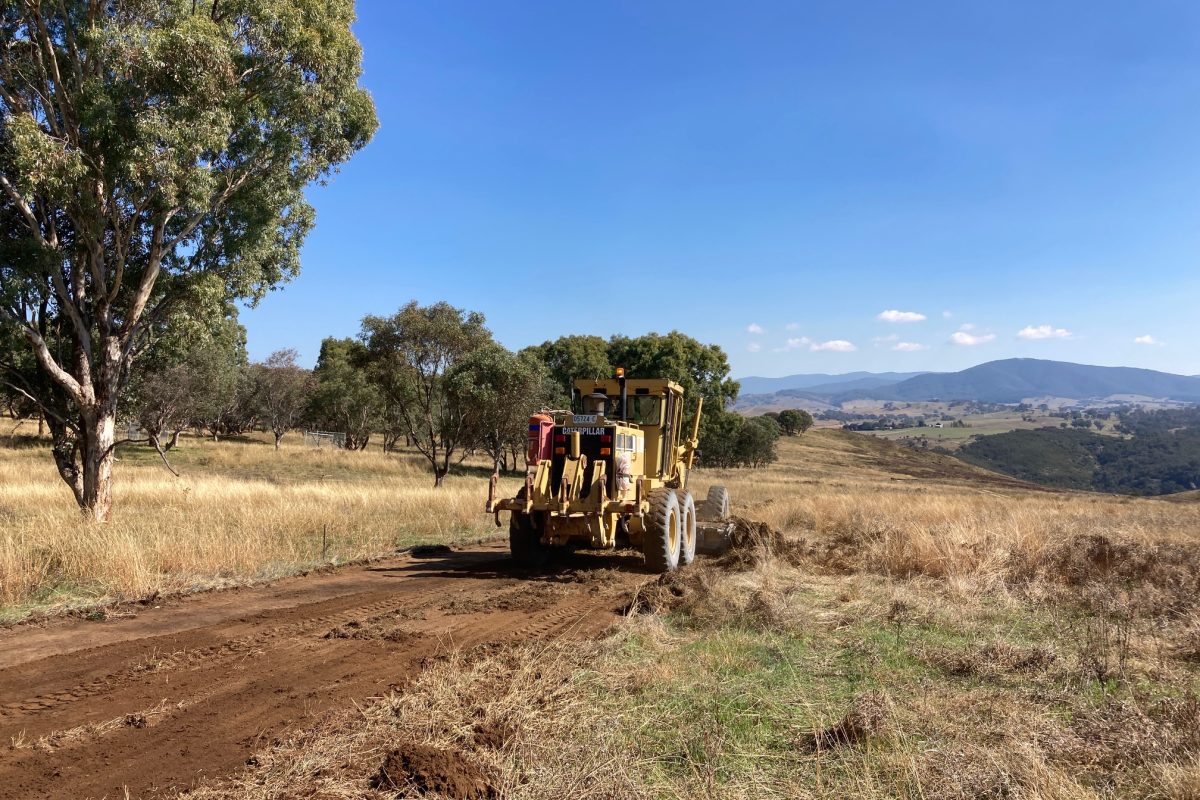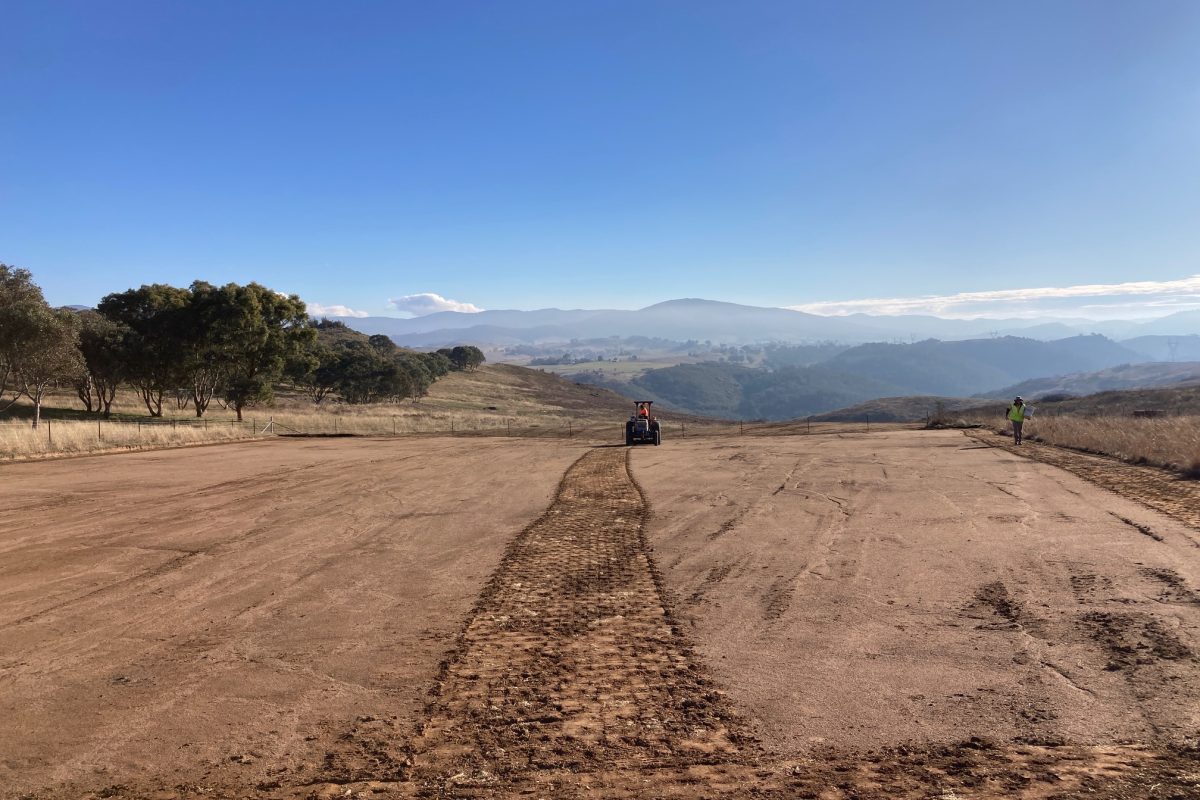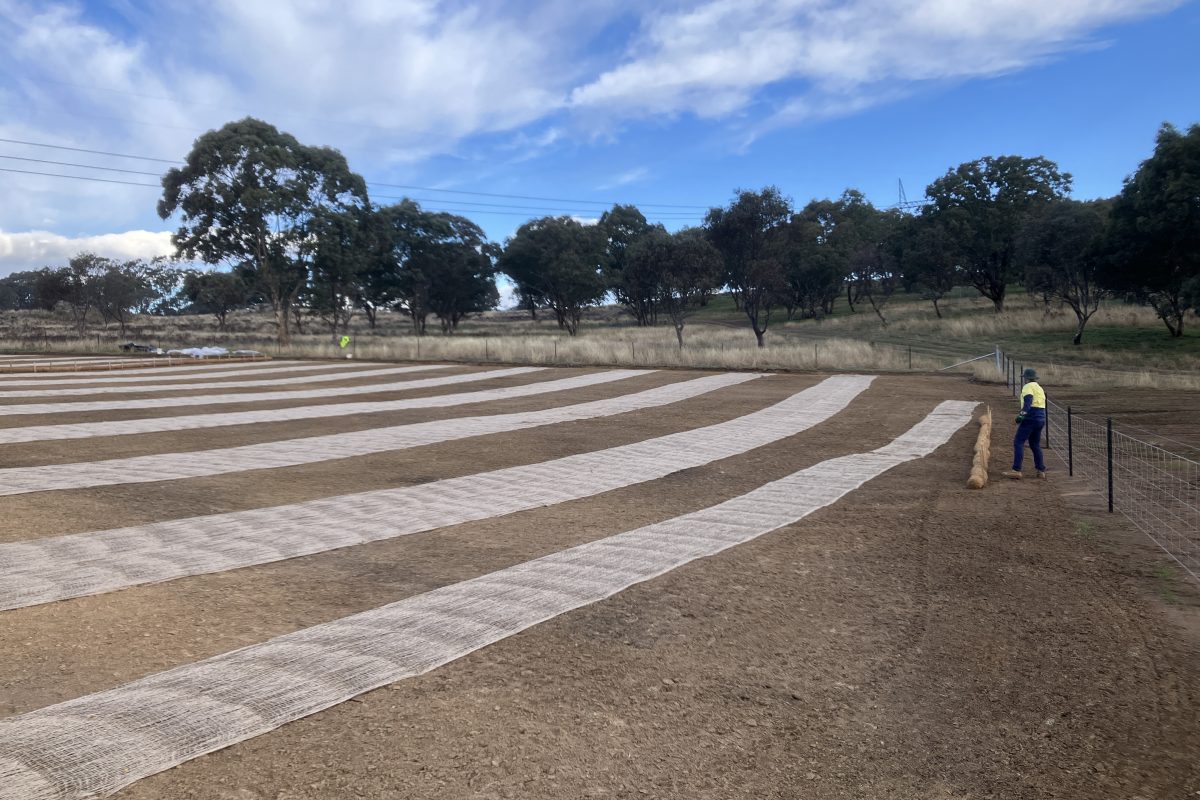Extending Habitat for the Endangered Pink-tailed Worm-lizard
Ginninderry Conservation Trust’s commitment to native flora and fauna is unwavering.
So much so, that a significant parcel of land has been rehabilitated into its natural state after decades of exotic infiltration. The hope was that a certain little resident would utilise this restored habitat – the shy Pink-tailed Worm-lizard (Aprasia parapulchella).
The rehabilitation process, called a “Scrape and Sow”, took place in 2020, when just under 0.3 hectares of land was rehabilitated in collaboration with Greening Australia.



Ginninderry Conservation Trust’s Riparian Restoration and Education Officer Bridie Noble said the process was both exciting and a learning experience.
The aim was to recreate Natural Temperate Grassland and Pink-tailed Worm-lizard habitat in an area largely dominated by exotic annuals in the Ginninderry Conservation Corridor. The designated plot of reasonably flat land was selected in the southeast corner of the Corridor, and about 15-20 cm of soil was removed so weeds and soil-stored exotic seeds could be replaced with sown native grassland species. Jute mesh strips were installed at intervals across the site to help reduce seed movement from rainfall. The area was fenced and shade cloth was erected around the perimeter to stop wind-blown exotic seeds from re-entering the area.
While the scrape itself was soon declared a success, Bridie noted that the shade cloth installation proved less so.
“The neighbouring cattle wandered down and ate it all. It can’t have been good for them!” she said.
Despite the eaten shade cloth, the native vegetation took hold successfully. Small habitats were installed in the form of rocks and bricks. Then it was a matter of hoping and praying for a sign of the elusive Pink-tailed Worm-lizard to move into the site.
The dedicated Trust team kept a close eye on things and was excited to see ants (ant larvae and eggs are a food source for the lizards) in the area. Within a few years, the team’s hard work and patience was rewarded when a Pink-tailed Worm-lizard skin was found under a rock during a routine examination of the area.

Not long after, the little lizard – tiny (around 15-20 cm) and more like a worm than a lizard – was observed in the flesh.
“It was so exciting to discover the skin and then see the lizard,” said Bridie.
In June 2024, the Ginninderry Conservation Trust extended the program with the help of Greening Australia, and a further 0.26 hectares of land was scraped and sewn, almost doubling the original plot.
Meanwhile, Bridie and the team are keeping a watchful eye, managing weeds that happen to sprout in the area, treading carefully so as not to destroy any new native seedlings, and always searching for more lizards.
“We’ve seen evidence of co-habitation of two (or sometimes more!) individuals, so hopefully we will see some more soon.”



